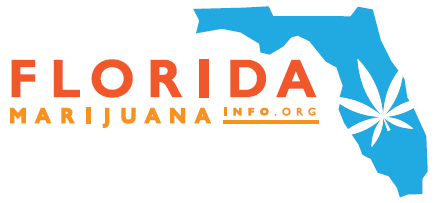Florida’s First Medical Cannabis Law
While the Florida legislature recently passed SB 1030, the low-THC Charlotte’s Web medical marijuana bill, and Florida voters have a chance to approve full medical marijuana legalization in November with Amendment 2, many people are completely unaware that the Florida legislature passed Florida’s first medical cannabis law in 1978. In 1978 New Mexico became the first state to pass a Therapeutic Research program, to distribute medical cannabis to certain glaucoma and cancer patients. Florida followed New Mexico with its own Controlled Substances Therapeutic Research Act, HB 1237, which was introduced in 1978 by Democratic state Representative H. Lee Moffitt from Tampa, and a companion bill, SB 906, was introduced in the state Senate by state Senator Betty Castor, also from Tampa.
Research Programs Spread Across the Country
Throughout the rest of the 1970s and into the 1980s, over 30 states passed some form of Therapeutic Research Act. In many of those states the laws remain on the books, yet some states, like Florida, later repealed them. Just this year, New York Governor Andrew Cuomo revived his state’s Antonio G. Olivieri Controlled Substance Therapeutic Research Program, which was originally passed into law in 1981, but was only used by the New York Department of Health for a Phase III cooperative clinical trial. By 1985 the trial had treated 208 patients with medical marijuana with over 6,000 marijuana cigarettes. The State of Georgia is also looking to revive its 1980 Therapeutic Research Program.
The Committee Substitute for House Bill 1237 (Chapter 78-413) created the Controlled Substances Therapeutic Research Act, and was passed and signed into law by the Governor. It became Section 402.36 of the Florida Statutes. The purpose of the bill was to create a research program that would allow glaucoma patients and cancer chemotherapy patients to have access to medical cannabis under strictly controlled conditions. The Secretary of the Department of Health and Rehabilitative Services appointed physicians to a Patient Qualification Review Board to certify patients, doctors, and pharmacies that wished to participate in the research program. The bill also reclassified cannabis in the list of Controlled Substances. Each year the Secretary of the Department of Health, and the Patient Qualification Review Board would send annual reports on the research program to the Governor and the state legislature.
 The Secretary of the Department of Health and Rehabilitative Services would procure cannabis from the National Institute of Drug Abuse (NIDA) and would arrange for certified pharmacies to dispense the cannabis to certified patients. Approximately 35 state operated pharmacies were to dispense the cannabis. The University of Mississippi has legally been growing cannabis for research purposes since the late 1960s. In the late 1970s the Carter administration began pressuring the National Cancer Institute to study the use of marijuana in combating the effects of cancer treatments. In 1976 patient Robert Randall petitioned, and later sued, the FDA to permit the use of medical cannabis for his glaucoma. This lead to the federal government creating a Compassionate Investigational New Drug program. This federal program was similar to state Controlled Substances Therapeutic Research Acts, and the state programs were federally approved. The state programs obtained their cannabis from the federal government through NIDA. While many states passed laws to create research programs, only about 8 states actually had active programs. Some state programs did not meet the strict federal requirements.
The Secretary of the Department of Health and Rehabilitative Services would procure cannabis from the National Institute of Drug Abuse (NIDA) and would arrange for certified pharmacies to dispense the cannabis to certified patients. Approximately 35 state operated pharmacies were to dispense the cannabis. The University of Mississippi has legally been growing cannabis for research purposes since the late 1960s. In the late 1970s the Carter administration began pressuring the National Cancer Institute to study the use of marijuana in combating the effects of cancer treatments. In 1976 patient Robert Randall petitioned, and later sued, the FDA to permit the use of medical cannabis for his glaucoma. This lead to the federal government creating a Compassionate Investigational New Drug program. This federal program was similar to state Controlled Substances Therapeutic Research Acts, and the state programs were federally approved. The state programs obtained their cannabis from the federal government through NIDA. While many states passed laws to create research programs, only about 8 states actually had active programs. Some state programs did not meet the strict federal requirements.
Research Program Amended and Repealed
In 1979 the Controlled Substances Therapeutic Research Act was amended to include “osteopathic physicians within those practitioners who may prescribe cannabis pursuant to the controlled substances therapeutic research program and includes a licensed osteopath on the patient qualification review board; and providing for confidentiality.” The state legislature amended the act again in 1981, making minor modifications to the research program, as well as changing the name of the act to the Cancer Therapeutic Research Act of 1981. Another bill, CS/HB 747, was introduced in 1981, which would have expanded the research program, but it was vetoed by Governor Bob Graham.
Hundreds of patients inquired about joining the research program within the first year of the law being in effect. In 1984 the Florida legislature repealed the Cancer Therapeutic Research Act of 1981, without debate, in a one sentence provision that was attached to House Bill 269, a bill introduced by Democrat Howard Lippman from Hollywood. It appears the reason for the repeal had to do with continued funding in the budget for the Patient Qualification Review Board. The Patient Qualification Review Board was given less money in the budget each year until it’s repeal. These early medical cannabis laws were not very successful mainly because the states relied on the federal government to supply patients with their medicine. The FDA, DEA, and NIDA eventually tightened access to the federal supply of cannabis for research programs. Now that 23 states and Washington DC have shown how to create effective state medical marijuana programs, Florida now has the chance to pass an effective and modern medical cannabis law with Amendment 2 in November.
Former state Representative H. Lee Moffitt and former state Senator Betty Castor were not available for comment.















 OMD Agency
OMD Agency
Recent Comments